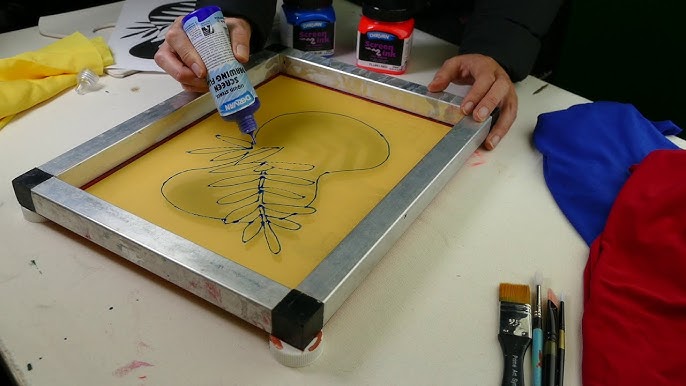ChatGPT said: How to reach 10:9 Design contact for service inquiries
Wiki Article
The Vital Overview to Understanding Screen Printing and Its Versatile Utilizes
Screen printing has a rich background that goes back to ancient times, advancing right into an advanced method made use of throughout various industries today. This overview explores the intricacies of the screen printing procedure, detailing its applications in fashion, advertising, and home style - 10:9 Design near me. Understanding these fundamentals can open up innovative potential for both creative and industrial jobs. The adhering to areas will certainly reveal vital suggestions and strategies to enhance one's screen printing venturesThe History of Screen Printing
Screen printing has roots that map back centuries, its advancement shows the imaginative and technical innovations of various cultures. Stemming in ancient China, the strategy was initially used for enhancing textiles and later infect Japan, where it ended up being essential to Ukiyo-e woodblock printing. The method shifted to Europe in the 18th century, where it gained appeal among craftsmens and commercial printers. The invention of image emulsion in the 20th century transformed screen printing, enabling for even more complex designs and better performance. Artists like Andy Warhol even more pushed its appeal, using the medium to create legendary works that blended commercialism and art. By the late 20th century, screen printing had actually established itself as a functional method, used in fashion, advertising and marketing, and fine art. Today, it remains to develop, integrating electronic modern technology and expanding its applications across numerous sectors.The Screen Printing Process Explained
Screen printing transforms creative visions into concrete layouts through a collection of exact actions. At first, an image is created and after that transferred onto a screen, generally made from great mesh textile stretched over a frame. A light-sensitive emulsion is related to the screen, which is revealed to light, solidifying in locations not covered by the image. After cleaning out the unhardened emulsion, a stencil is formed.Next, the screen is positioned over the substrate, whether it be fabric, paper, or another material. Ink is then pushed via the open locations of the pattern making use of a squeegee, depositing the style onto the substratum listed below. This procedure can be repeated for multiple colors, requiring different displays for every tone. Ultimately, the printed item is cured using heat to guarantee the ink adheres effectively, resulting in a sturdy, dynamic style prepared for usage.
Sorts Of Screen Printing Techniques
In addition, specialized techniques, such as discharge screen printing, get rid of dye from the fabric to create softer prints, while foil screen printing applies metallic foil to achieve a shiny surface (10:9 Design Screen Printing). Each strategy supplies distinctive qualities, dealing with different innovative demands and production ranges, eventually increasing the opportunities within the screen printing domain name
Applications of Screen Printing in Different Industries

Furthermore, the signage and advertising fields make use of screen printing for producing appealing displays and banners. This approach enables strong shades and elaborate designs that capture attention. In electronic devices, screen printing is utilized for using conductive inks to motherboard, vital for element connections. The home style market embraces screen printing to generate distinctive layouts on textiles and wall surface art. Generally, screen printing serves as a critical device across varied fields, boosting items with customized and aesthetically enticing graphics.
Tips for Successful Screen Printing Projects
While carrying out a screen printing task, careful interest to information can significantly boost the last end result. Picking top quality products is crucial; this includes the screen, inks, and substrates. Utilizing ideal mesh counts can impact ink deposition and information resolution. Prep work is equally crucial; thorough cleaning of displays and correct exposure times ensure crisp prints.Next off, precise enrollment is essential for multi-color prints. Making use of positioning tools can assist achieve precise layering. Furthermore, testing prints on scrap products before production aids determine potential concerns without squandering resources.

Often Asked Questions
What Materials Are Best for Screen Printing on Material?
Cotton and polyester blends are ideal for screen printing on textile because of their resilience and ink absorption. Additionally, specialized fabrics like silk or canvas can generate distinct appearances and coatings, enhancing the overall layout quality.Just how Do I Clean and Maintain Screen Printing Tools?
To clean and maintain screen printing tools, one should regularly wash screens with appropriate solvents, evaluate mops for wear, lubricate moving parts, and store all products in a completely dry, dust-free setting to prolong their life-span.What Are the Environmental Influences of Screen Printing?
Screen printing can have significant environmental effects, consisting of chemical waste from solvents and inks, water usage during cleaning procedures, and energy usage. Green products and lasting practices are important for decreasing these unfavorable effects.Can Screen Printing Be Done at Home Efficiently?
Screen printing can be efficiently done at home with the right products and strategies. Enthusiasts can produce quality prints, though success depends on their ability level, equipment, and understanding of the process entailed.
What Are the Expenses Related To Starting a Display Printing Organization?

Starting a screen printing service entails expenses for equipment, materials, and office. First costs generally range from a few hundred to numerous thousand dollars, depending on the scale, top quality of machinery, and wanted production ability.
Screen printing has a rich background that dates back to old times, progressing right into an advanced strategy utilized across numerous markets today. An additional method, rotating screen printing, employs cylindrical displays, facilitating continual printing on material rolls, thus boosting efficiency for large manufacturings. Furthermore, specialized techniques, such as discharge screen printing, get rid of color from the material to develop softer prints, while foil screen printing uses metallic aluminum foil to attain a shiny finish. In the fashion market, screen printing is widely used to produce dynamic styles on apparel, allowing brand names to display their one-of-a-kind styles. Cotton and polyester blends are suitable for screen printing on textile due to their resilience and ink absorption.
Report this wiki page